Hamachi Sashimi is delicious, buttery yellowtail at its most basic level—and it’s absolute perfection.
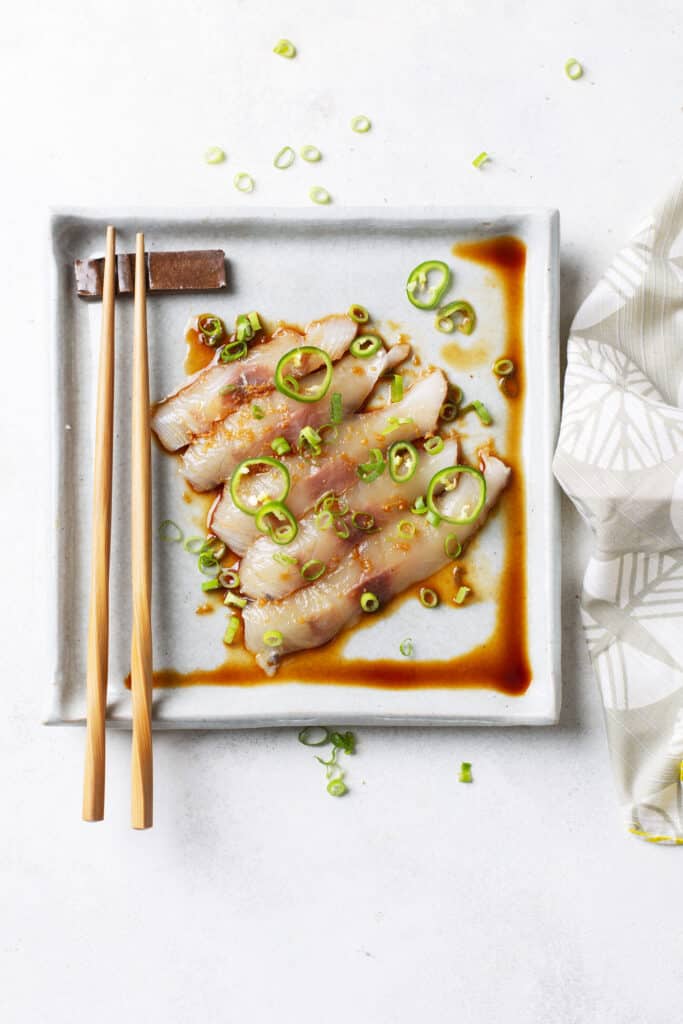
Sushi was an eleventh-hour addition to my diet, as Mom had a bad night of sushi in the 1970s, and thus it was banished from our restaurant rotation. Therefore, my first sashimi came after an intense arm-twist from my roommates, and we ordered takeout from the now-defunct Sushi Teri in Isla Vista (the student beach community adjacent to UC Santa Barbara). I was a little on edge, but once the wasabi cleared my nose and the unagi melted on my tongue like butter, I was hooked.
Lots of folks love those huge sushi rolls that are fried or stuffed with a spicy minced fish mixture, but my favorite at a sushi restaurant is the simple, elegant hamachi sashimi. Hamachi, also known as Japanese Amberjack and Pacific Yellowtail, is commonly served in sushi restaurants due to its firm texture and buttery flavor. Slightly sweet, delicate, and creamy, this fatty fish is a delicious bite at the sushi table.
This hamachi recipe is simple, but it does have a few fun aspects! The sauce that’s poured on top of the fish throws you a sushi curveball; spice is not usually a prevalent component when it comes to sushi, apart from the wasabi. However, the sprinkles of jalapeño bounce off the jolt of ginger, bite of lemon, and inky soy sauce to give the hamachi a fully developed pop of flavor.
Is Hamachi Sashimi Healthy?
Healthwise, hamachi is the dieter’s jackpot. Yellowtail is rich in protein and omega-3 fatty acids, vitamins B6 and B12, and selenium. You’ll also get some anti-inflammatory action from the ginger and vitamin C from the pepper slices and lemon juice. This fish dish is a win-win!
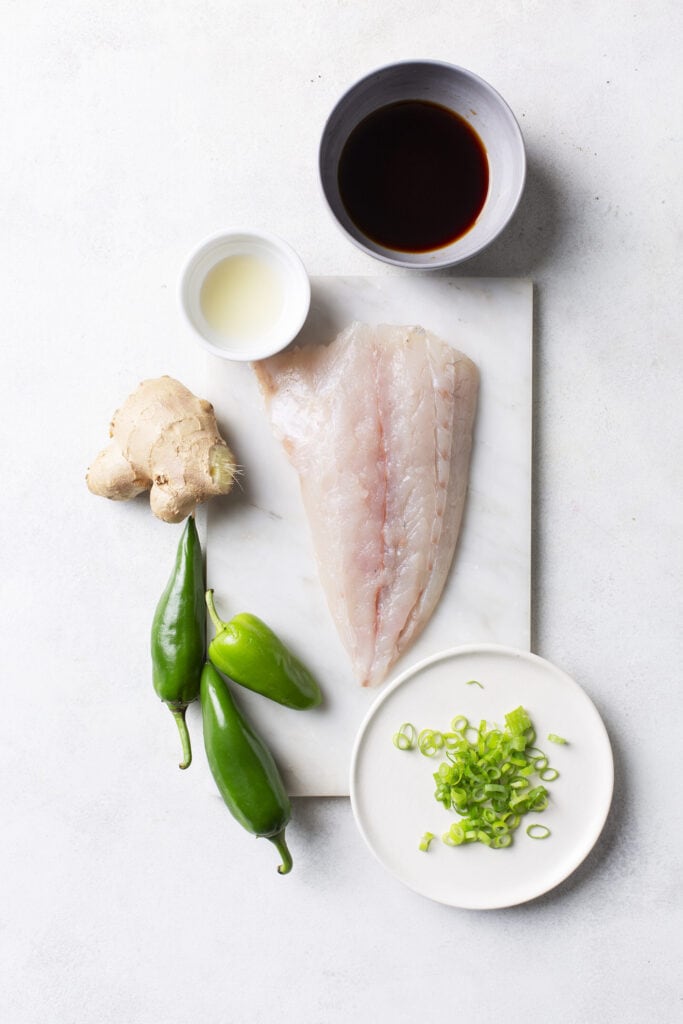
Finding “Sushi-Grade” Fish
Before you go fish shopping for this recipe, I need to let you in on a little secret. “Sushi-grade” is a marketing term. That’s right: the “sushi-grade” label is bestowed upon a piece of fish solely at the seller’s discretion, and there is no official regulatory body that inspects and deems a fish as safe to eat raw.
That being said, you shouldn’t assume that any old piece of fish is appropriate to use for sashimi. Pick a reputable fresh fish market to buy your hamachi, and ask them what has been done to make their hamachi “sushi-grade.” Outside of large tuna species, wild-caught fish needs to be frozen at a very low temperature (lower than most home freezers get) in order to kill parasites, according to FDA guidelines. Fish markets across the United States generally use these guidelines to inform their fish storage procedures; however, FDA guidelines are not always strictly enforced from state to state. So, it’s best to ask the fish market directly!
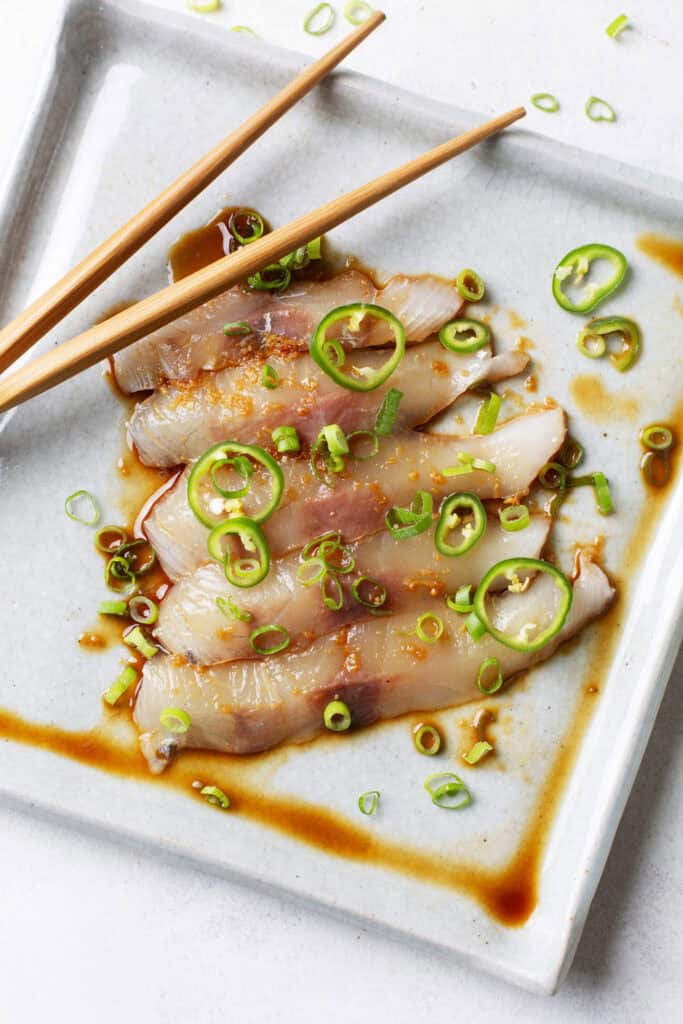
How Do I Store Leftovers?
Preparation and assembly of this dish should be done immediately before serving for maximum freshness. As this recipe includes raw fish, it is best eaten as soon as possible. If you have leftover hamachi, eat it the next time you feel snacky!
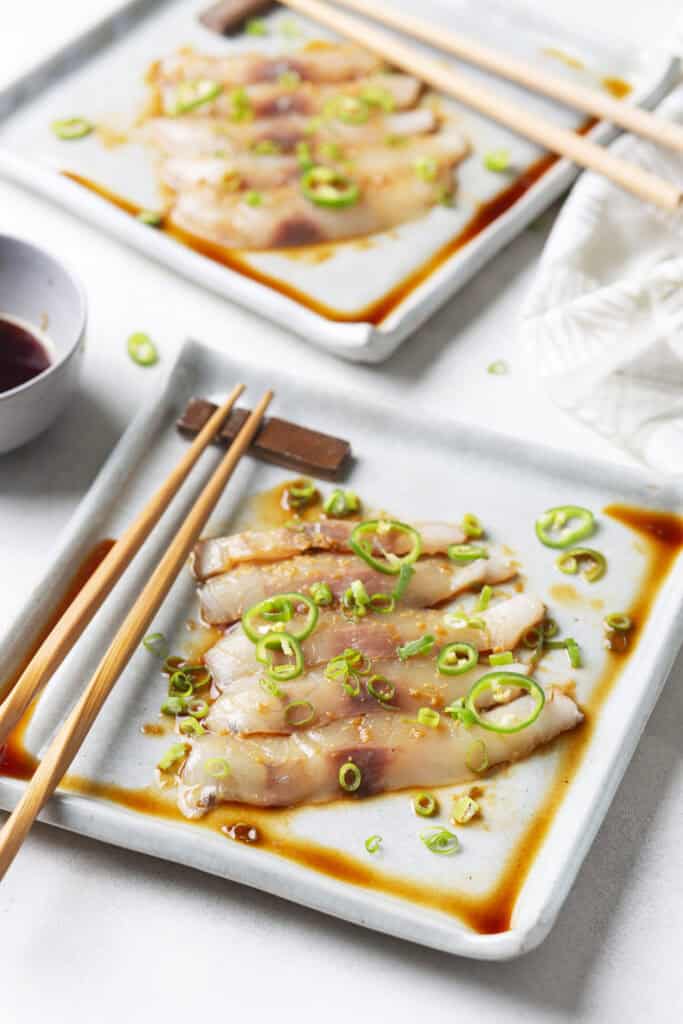
Serving Suggestions
Keep your sides for hamachi sashimi light and crisp with delicious, refreshing salads such as Asian Cabbage Salad and Sunomono Salad.
If this hamachi sashimi ends up brightening the sushi path for you, there is a huge world of dishes out there for you to try next time. Check out this amazing Sushi Burrito, try your hand at Baked Salmon Sushi Cups, mix up some Spicy Tuna, and don’t forget the simple-but-satisfying California Roll to round things out!
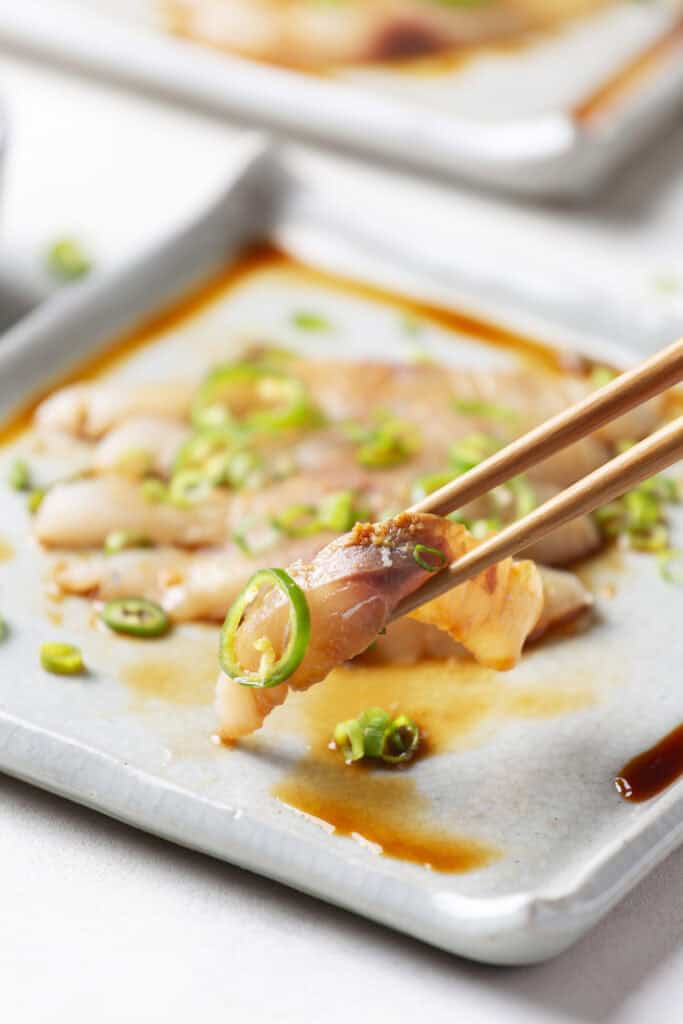
Recipe

Ingredients
- ¼ pound sushi-grade yellowtail
- 1 tablespoon low-sodium soy sauce
- 1 teaspoon freshly squeezed lemon juice
- ½ teaspoon grated fresh ginger
- ½ small jalapeño thinly sliced
- 1 tablespoon chopped green onions
Instructions
- Thinly slice the yellowtail into approximately 8 equal pieces and arrange them on a chilled serving plate.
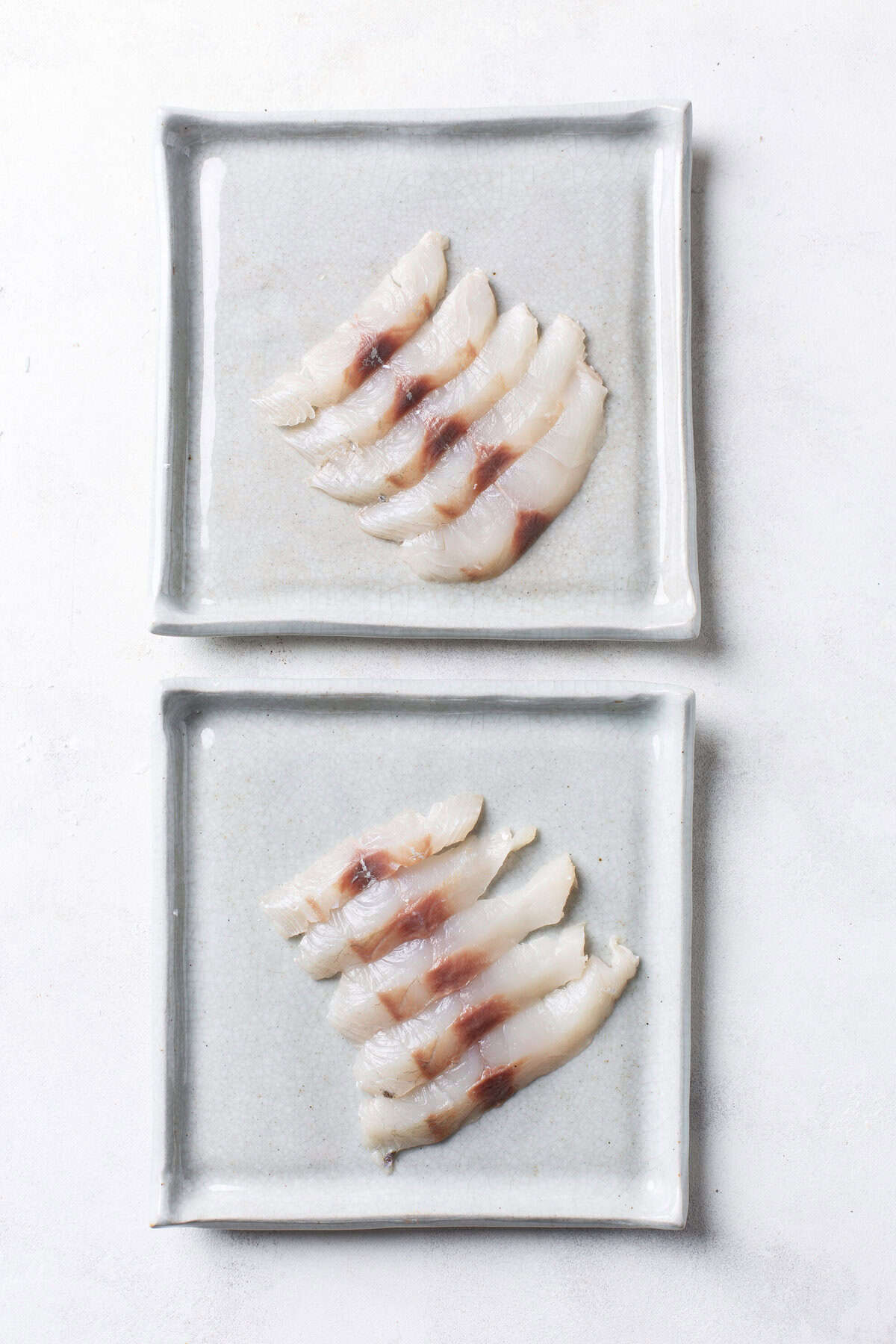
- In a small bowl, whisk together the low-sodium soy sauce, lemon juice, and grated ginger to create a light dressing.
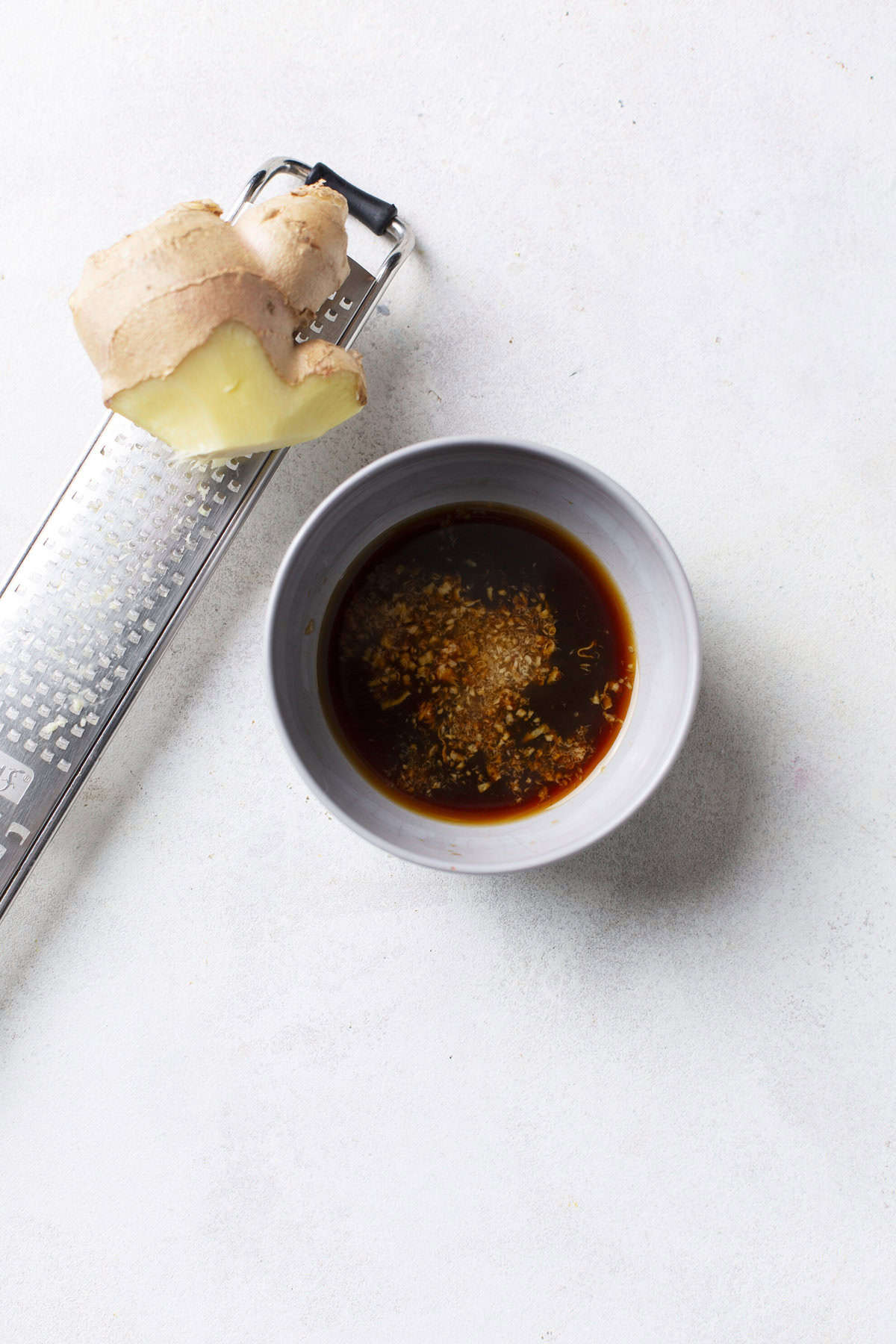
- Drizzle the dressing over the yellowtail slices, ensuring each piece is lightly coated.
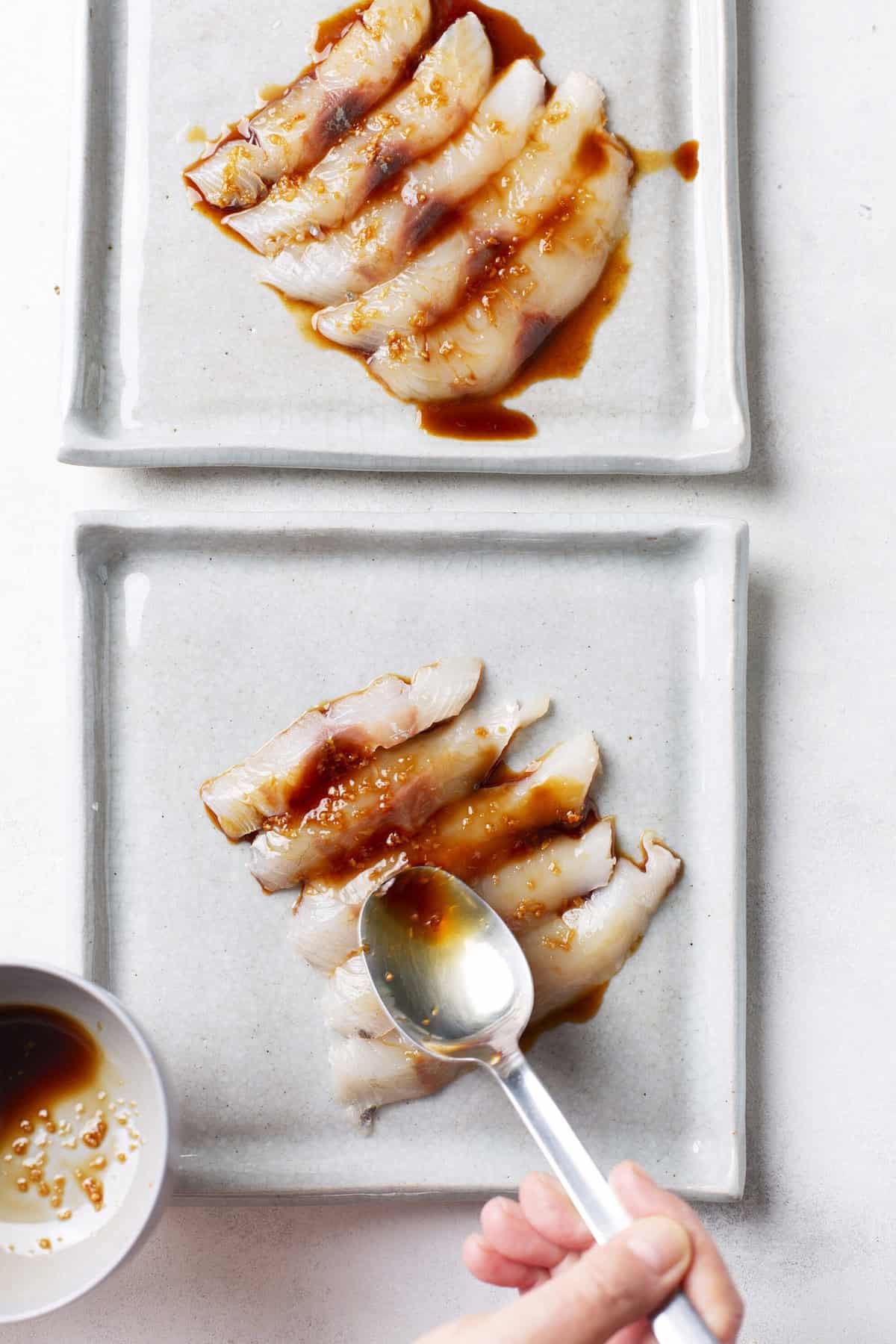
- Garnish the yellowtail with jalapeño slices and a sprinkle of chopped green onions before serving.
Nutrition Info:
Recipes written and produced on Food Faith Fitness are for informational purposes only.
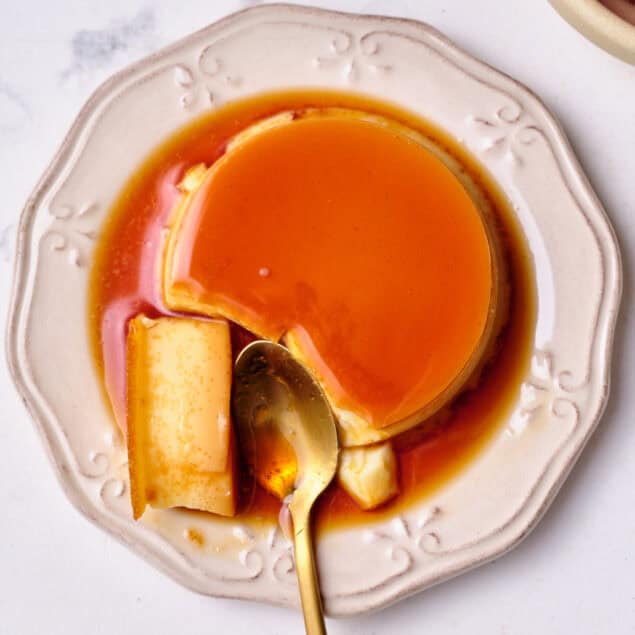

Leave a Comment